Tuning the Popular BMW 3 Series.
"BMW 3 series tuning."
The BMW 3 series was first launched in 1975 with the E21, however it was not until 1982 the 3 series became a success with the E30.
In particular the "Ultimate Driving Machine" really kicked things off in 1985 with the E30 M3 which was produced as a race car for the road.
This was because BMW wanted to compete in touring car racing.
After this success, 3 more successful generations have followed.
Many people get confused at the version numbers offered in the 3 series range, so we've pulled together all of the model designations and years here for reference, and noted significant changes to the 3 series over the years.
One of the most popular model ranges BMW have produced and it led to many spin off models, such as the M3 and M4 and Z series models shared the platform with some 3 series models.
First generation 3 Series
(E21; 1975–1983)
We saw fuel injection used from 1975 and in 77, some 6 cylinder engines were added.
- 1.6-2.0 L M10 I4
- 2.0-2.3 L M20 I6
Second generation 3 Series
(E30; 1982–1994)
Came in saloon and Estate body versions. The Z1 roadster shares the E30 platform, giving an idea of the potential from this chassis, with the right mods.
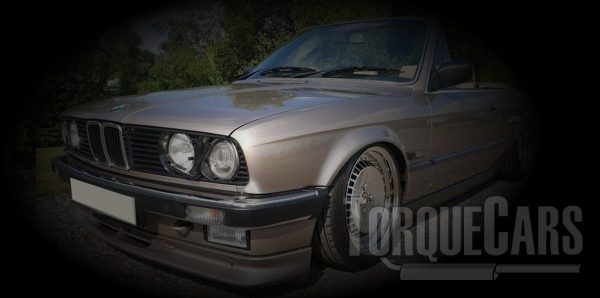
- 1.6-2.5 L M10/M40/M42 I4
- 2.0-2.5 L S14 I4
- 2.0-2.7 L M20 I6
Diesel:
- 2.4 L M21 I6
Third generation 3 Series
(E36; 1990–2000)
A coupe version was added and the E36 won many car of the year awards during it's production run, thanks in part to the revised multi link rear suspension. The Z3 roadster was based on this platform.
Diesel:
- 1.7 L M41 turbocharged I4
- 2.5 L M51 turbocharged I6
Fourth generation 3 Series
(E46; 1997–2006)
All wheel drive was offered in the E46, a great setup that really improves the wet weather performance of the 3 series range. We also saw valvetronic introduced on the engines, BMW's take on variable valve lift and durations.
Diesel:
Fifth generation 3 Series
(E90/E91/E92/E93; 2004–2013)
A cabriolet version was offered. In 2006, we saw a turbocharged version in the form of the stunning 335i - our car of the year 2021. By the 5th generation we see the annoying run flat tires becoming standard across the range.

Gasolene/Petrol
Diesel:
Sixth generation 3 Series
(F30/F31/F34; 2011–2018)
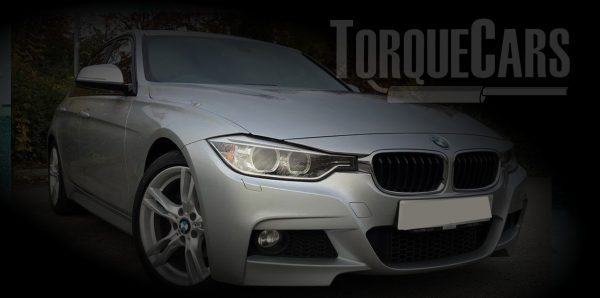
Turbocharged engines were introduced across the range along with a plug in hybrid version.
Diesel
Seventh generation 3 Series
(G20; 2018–present)
Plug-in hybrid:
- 2.0 L turbocharged B48B20 I4 with 50 kW electric motor
Diesel:
3 Series Handling/Suspension upgrades
Handling modifications are usually your first port of call for the 3 series.
We found that most 3 series factory suspension setups need tweaking, a few degrees of toe (set some toe out to improve cornering or use toe in for better stability) and you only need around 1 to 2 degrees, and slight negative camber will often improve your cornering and handling.
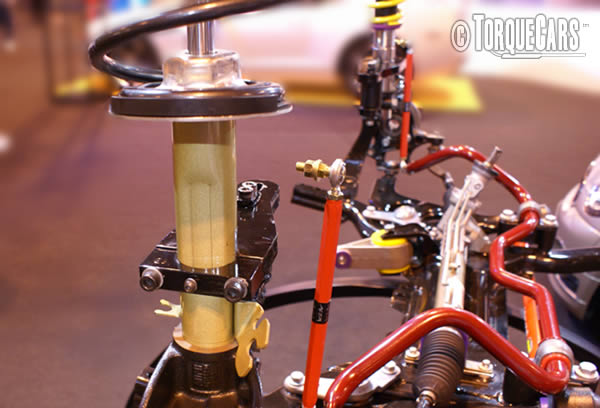
We would go to a maximum drop of 23mm - 43 mm. on most models. You risk compromising your handling if you go lower than this.
Anti-roll bars are also a great way of improving how the car handles as chassis roll is reduced through hard cornering.
Adjustable setups are available and are very useful if the car is used both on the road and on the track. Strut braces are an easy modification that helps reduce chassis flex. Front and rear strut braces will ensure the car stays stable at top speed.
Improvements to the bushings
What factors should you consider when setting up and selecting your suspension bushings if your 3 Series is also used as a daily driver?
It is possible to connect the 3 Series's suspension components to the chassis of the 3 Series using poly bushes, which are drop in replacements for the oem rubber mounts. The rubber ones typically wear out with time and need replacing anyway so why not upgrade.
By replacing new OEM rubber bushings, you may greatly improve your vehicle's performance.
Because polyurethane bushings are stiffer, the ride may be less forgiving, but the bushings will last longer and maintain the car's handling for longer.
Worn bushes may also hasten the stress of other suspension components due to the increased vibration and play.
With a new set of polyeyurothane bushes, the excessive play associated with rubber bushes may be mitigated.
You may struggle to find a full set of poly bushes, but most areas have the primary mounts available. Custom poly bushings are often made to your requirements.
A common misconception is that a non-adjustable suspension system that lowers the vehicle by90mm from a franchised component shop is the best option. But suspension design and setup is quite complex.
Claims are often made that all 3 Series models and years may be able to utilise the same suspension kits sold by vendors.
The 'generic one set for all models' approach is obviously a flawed assumption when it comes to adequately supporting a diverse variety of cars. Engine weights and trim levels, and even alloy rims will affect the handling and require different suspension setups.
How low should you go on the 3 Series?
TorqueCars research and testing indicate that the maximum suspension drop for most road vehicles is 29 - 43 millimetres, whereas the maximum suspension drop for versions that come with lowered suspension already is 19 millimetres.
These tolerances may be drastically lowered if the wheel size is changed. Even with 17" wheels and stock suspension, lowering the vehicle might result in lots of problems.
Stability may be improved by lowering the 3 Series, but the ultimate goal should always be to enhance handling. It is critical to use the right shocks when employing lower springs.
Putting a little negative camber on the fronts and a degree or two of toe (in for better stability or out to improve cornering), will radically improve your 3 Series in handling and cornering.
3 Series Brake Mods
For sharper improved braking put better high friction brake pads and match this with meatier brake discs.
Bear in mind that some performance brake pads can grind and will have to be hot before they are effective.
In every day driving the brakes are only applied now and then, therefore won't stop you as well so choose pads which have a low working temperature.
An important part of any project is making the sure the car stops. Luckily BMWs allow you to swap parts from other BMWs to create a bigger, better setup.
An example of this is an E46 330i brakes being applied to an E36. Just make sure the correct master cylinder and servo are used otherwise the middle pedal won’t do anything! If you want serious brakes though, many setups are available.
Grooved and drilled discs are a good idea to stop brake fade and allow up rated cooling.

These characteristics are key to track cars, but may be too much for a daily drive car as brakes may not reach optimum temperature quick enough. Brake pads are also important and should be chosen wisely depending on what the car is used for.
Using a pad designed for track use may not be best for road use and visa-versa. A simple but effective way to improve braking is to install a set of stainless steel brake lines. These reduce any flex in the lines and don’t corrode like OEM ones do. This will improve the feel of the brakes in any setup.
Putting meatier brake discs and better performance pads should make for greatly improved stopping. (They will brake effectively over longer periods during heavy use than stock brakes will, but grip has more of a bearing on the cars ability to stop).
BMWs naturally have very good suspension, especially thanks to the 50:50 weight distribution found throughout the range.

But any suspension setup can be improved upon. A good start to a suspension overhaul would be to install a set of adjustable coil overs. These are available in many varieties from eBay specials to high end track setups.
You will find that older BMWs need more work to get the most of out of them as parts have endured more wear and tear due to their life span.
In particular pay attention to the bushes. The better the bushes, the stiffer the ride will be. Powerflex provide a great range of polyurethane bushes (poly bushes) for all BMWs that will stiffen up the ride and help handling.
When installing coil overs, be sure to go for some adjustable top mounts as well.
This will help you gain camber and castor. Generally the lower the better, however some models require a sump guard if you intend to go extremely low.
If ride comfort is paramount to your everyday journey then we recommend you go for a set of lowering springs instead as a coil over setup can be quite stiff.
BMW 3 Series Tuning
Now we come to the exciting part of any BMW 3 Series project, more power!
These are the upgrades are usually carried out by our members, decide how far you want to push your car before you get going.
Getting the right sports upgrade kits for your planned usage of the car is a time and money saver. Stage 3 (competition) mods just don't work well on the road making the car difficult to drive.
Please watch our video which covers the 5 principles of tuning your 3 Series. Be sure to keep up with our latest YouTube content and subscribe.
For NA (naturally aspirated) engines please watch our video which covers the 5 principles of tuning your 3 Series. Be sure to keep up with our latest YouTube content and subscribe.
Best mods for your 3 Series
- 3 Series Suspension Upgrades - Fitting a more sporty Suspension kit dramatically improves 3 Series handling Adjustable coilovers and better bushings are what is needed here.
- Turbo upgrades - Adding a turbocharger is the most dramatic method to increase your intakes air supply, ensuring you are able to use more fuel and make better power figures. Although one of the most costly modifications it does provide the largest gains.
- Air Induction and Performance Exhausts - Note that on their own these mods won't ADD PERFORMANCE on most cars, but they permit you to release power after other upgrades by losing a restriction.
- Fast road cams are significant power adders, but we strongly suggest they be fitted by someone qualified to set them up properly and they are not always easy to source but you might find a local firm to regrind a stock camshaft for you.
- Internal engine mods - crank, pistons, conrods & compression ratio including balancing and blueprinting
- Remaps - A Remapped 3 Series ECU offers the most advantage in terms of cost, aftermarket ECUs, and Tuning boxes are all alternatives.
- Flywheel lightening - a reduced weight flywheel will noticably improve the engines rev changes. But not always recommended for all 3 Series engines.
- Braking Mods - Enhancing your stopping power needs to be high on your agenda.
3 Series Tuning Stages
Typical stage 1 mods often include: Panel air filter, Alloy wheels, Sports exhaust, Engine Tunes/Remapping, Lighter flywheel, Suspension upgrade (drop 23mm - 43 mm.).
Typical stage 2 mods often include: high flow fuel injector, Ported and polished head, Power/Sport clutch, Fast road cam, fuel pump upgrades.
Typical stage 3 mods often include: Engine balancing, Sports gearbox, Competition cam, Adding or upgrading forced induction (turbo/supercharger), Internal engine upgrades (pistons/head/valves).
Peak power is nice in motorsport but for a drivable and fun car you need a wide torque band and perhaps extending the rev range.
The aim of our guides is to give a starting base of car tuning mods and point you in the right direction, our forum is the place to go for detailed advice and tips on your modified car project, the best motorsport upgrades and all aspects of modding cars. Fast road cams offer one of the biggest torque gains for your money as far as a solitary sports modifications goes on a NA (naturally aspirated) engine.
It improves the intake and exhaust durations and pushes up the power if done right. Ideally you'd add other mods and finish up with a reflashed ECU. We'd also caution you not to go with a competition cam as this affects the engines idling and general town driving characteristics.
You will need to ensure that the engine is not starved of fuel so will need to uprate the fuelling.
Most power losses, and erratic idling after motorsport parts are done can usually be traced to timing or fuelling issues. 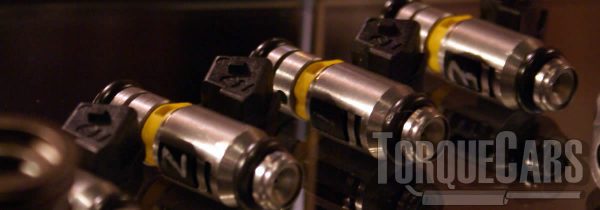 Improved injectors will enable you to supply sufficient fuel to the engine.
Improved injectors will enable you to supply sufficient fuel to the engine.
If have increased your fuelling with bigger injectors you will also need to get a bigger fuel pump to supply it.
3 Series Intake and Exhaust Tuning.
The next area for modification is the intake and exhaust. 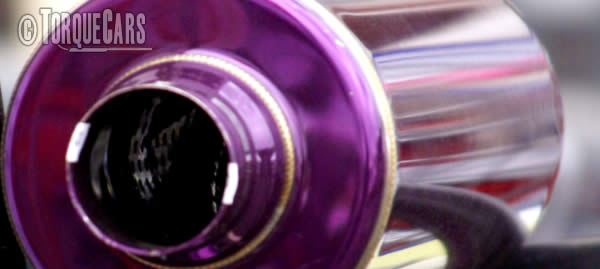
Please note that WE DO NOT RECOMMEND INDUCTION KITS, unless you have tuned your car extensively and are finding that the standard air intake has become a restriction.
Exhaust systems are an effective way of increasing throttle response and adding a few extra horses. Pipe diameter is the key element in choosing your exhaust system. The right size for an M3 will no doubt be too big for a smaller powered version.

For example, the optimum exhaust size for a 318is is 2.25 inches, but the M3 uses a 3 inch diameter. This is to achieve the best flow rate vs back pressure.
Induction kits can achieve good power gains across the range where you've increase power significantly already, but be sure to use a heat shield around enclosed filter as heat soak mean a loss in power.
However, smaller engines can achieve similar gains with just a panel filter. Throttle bodies are also an important part of adding power to your 3 Series.
Big bore throttle bodies (BBTBs) or individual throttle bodies (ITBs) help deliver more power and a better throttle response to your BMW. Once you’ve finished with your power modifications then make sure to take advantage by getting a tune/remap done.
This will ensure that there no flat spots meaning drivability is at it’s best and power is increased further. Don’t be put off if you have a smaller engined BMW, as good gains are available for most engines, especially diesels. If that isn’t enough for you then a turbo or supercharger may be the route to take.
Styling is possibly the most enjoyable part of a 3 Series project.
There are so many parts to choose from you will spend hours looking and planning.
Non-Mtec models may benefit from an Mtec conversion and Mtec models may be inspired by many aftermarket manufacturers such as Hartge, Alpina and AC Schnitzer.
The biggest choice you will make during your 3 Series project is what wheels to go for.
TorqueCars recommends going for lightweight wheels to maximise performance. This means avoiding replica wheels as they are usually heavier than standard wheels.
Due to the fact that alloys are less heavy they improve performance and they can help to cool the brake disks.
Get a good directional tread pattern tire to improve your handling and help improve traction on your 3 series.
Large 3 series alloys can decrease performance. If you get big alloys you will be changing your final drive ratio.
Because of this try to keep the overall rolling diameter of the wheel your OEM settings. In all cases we do not recommend going above 18 inches.
A common wheel choice is to put 5 Series rims onto a 3 Series. If you choose this route then make sure a spigot ring is used to reduce centre bore size. Otherwise you will endure wheel wobble.

To ensure you choose a good base for your project be sure to check the rear arches for rust as replacements will be expensive.
Other areas to check are the wiring contained within the boot harness as wear and tear can cause electrical problems, the Nikasil issue found with Nickel lined alloy blocks, exhaust header/manifolds and if equipped, VANOS.
If you would like to know more, or just get some friendly advice on Tuning your car please join us in our friendly forum where you can discuss 3 series options in more detail with our 3 series owners. It would also be worth reading our unbiased BMW tuning articles to get a full grasp of the benefits and drawbacks of each modification.
Please Check out my YouTube channel, we're regularly adding new content...
PLEASE HELP: I NEED YOUR DONATIONS TO COVER THE COSTS OF RUNNING THIS SITE AND KEEP IT RUNNING. I do not charge you to access this website and it saves most TorqueCars readers $100's each year - but we are NON PROFIT and not even covering our costs. To keep us running PLEASE Donate here
If you liked this page please share it with your friends, drop a link to it in your favourite forum or use the bookmarking options to save it to your social media profile.
Feedback - What do You Think?
Please use our forums if you wish to ask a tuning question, and please note we do not sell parts or services, we are just an online magazine.
Help us improve, leave a suggestion or tip
Please watch this video and subscribe to my YouTube channel.

 Click to accept YouTube Cookies & Play.
Click to accept YouTube Cookies & Play.